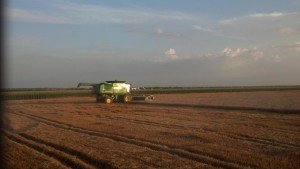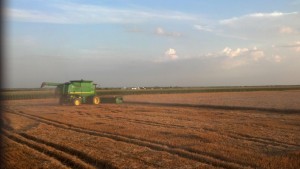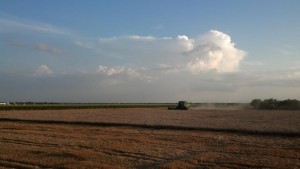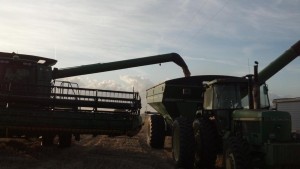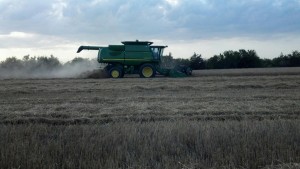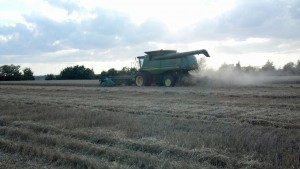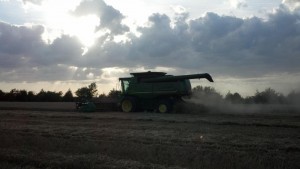It’s a blockbuster.
My granddaughter and I were wondering what to do Monday morning. Everyone else was working. “Grandpa,” Katelyn said, “Man of Steel.” “Superman?” I asked. “Yep,” she confirmed.
So, with no one watching, we steeled off to the theatre for the 11 am show.
“The Man of Steel” is a phrase that dates back to 1986 when the comic-book Superman was revamped, restructured and upgraded with a new look. Yes, Superman started in the comics. In fact, two high school kids living in Cleveland, Ohio discovered the superhero in 1933. Jerry Siegel was the kid-writer and Joe Shuster was the kid-artist who together described and drew the blue costume, red cape and red-and-yellow “S” on the chest of the man-from-Krypton. He was, even then, a dashing figure.
In 1938, the two young people sold the Kansas farm boy with the hidden powers to Detective Comics (which became DC Comics). Siegel and Shuster bartered their rights to Superman for $130 dollars in cash and a contract to provide DC Comics more super materials. In retrospect, the price was not much for the person-from-another-planet-with-the-amazing-powers who would become an international cultural icon.
Superman first appeared in Action Comics #1, the June 1938 inaugural issue. The cover is that of a tight-suited, clean-cut figure in a flowing cape running with a car lifted above his head. The strongman drives that car into the shattered remains of what is obviously the bad-guy’s transport, as the local citizenry run screaming away, their hands in the air. Without a doubt, the man-of-first-appearance made quite a first impression.
And, he did. He initiated the comic-book boom in super-heroes-in-tights. Who would have thought guys in tights would sell comic books? Our two kids from Cleveland did, and so did DC Comics. In fact, Superman-in-the-Comics became so popular that in February 2010 an original Action Comics #1 with the car-tossing-man-in-tights sold at auction for a cool $1,000,000. Superman is here to stay.
Now, on to the movies.
Paramount Pictures first hired Superman to do a series of seventeen, ten-minute, animated cartoons between 1941 and 1943. Of course, Superman posed for the cartoonists, but he wasn’t actually in the pictures.
Apparently, the purchasers-of-tickets-to-dark-theatres liked what they saw. In 1948, Columbia Pictures coaxed Superman to appear in the live-action film entitled simply “Superman.” In 1950, Columbia asked the increasingly-popular speedster to re-appear in “Atom Man vs. Superman.” As the last title suggests, the plot was thickening.
In 1951, “Superman and the Mole Men” tunneled into theatres everywhere. The film was fifty-eight minutes long, was shot in 12 days on a studio back-lot, and was a trial run for the TV series “Adventures of Superman.” Interestingly, an actor by the name of George Reeves played this Superman who bridged the movies to T.V.
In 1978, the real Superman movies started with “Superman I” and an all-star cast. Marlon Brando played Jor-El, the Kryptonite father of Kal-El (Superman’s space-born name before he landed in Kansas and moved in with the Kents). Gene Hackman entered the scene as the evil and dastardly Lex Luthor – boo, hiss. And, of course, Christopher Reeve (no apparent relation to George of the Mole Men above) was the clear-eyed man-in-the-skies and the mild-mannered Clark Kent on-the-ground with the dark glasses slipping from his, or Clark’s, nose as they both fall for Margot Kidder playing the knowing and ever-caring Lois Lane – hooray, much clapping and great fanfare.
The series was born: “Superman I” (1978), “Superman II” (1980), “Superman III” (1983), and “Superman IV: The Quest for Peace (1987).” Superman Reeve and Reporter Kidder starred in all four, and all four were financial successes, but near the end the fans were getting tired. A change was needed, and Superman retired from the cinemas . . . for a while . . . to contemplate what should be his role for a changing planet.
Superman attempted a return in 2006 in “Superman Returns.” It wasn’t the same. A tragic accident had paralyzed Christopher Reeve. He could not return for the role. The new actors received positive reviews and the film did well at the box office, but it really . . . well . . . it wasn’t Superman. Maybe Superman was a hero-of-the-past, without a home or a need in the new age.
Last Monday, for us, the “Man of Steel” returned. There is a realism in this new film that I don’t remember since I opened my first comic book years ago. It’s not the same and I know that, but somehow it is and I don’t know exactly why, but it is. All the fantastic special-and-can’t-be-avoided effects assaulting me in my lounged-and-tiered recliner are there. I was anchored firmly in place to the floor of the timeless-and-dark-polished mega hall of mesmerization and sensory deprivation, but somehow all the trappings of the modern cinema didn’t seem to matter. I even forgot I had on 3-D glasses.
I’d never seen this person before, this Clark Kent, but I had. I know I’d never seen Krypton like this, but I had – I just didn’t remember . . . until now. This was new, but it had always been there. When I tossed our empty popcorn bag and nacho container into the leaving trash receptacle, I knew that. As I carried our shared Superman-memorial soda cup into the mall and Katelyn adjusted her “I-Love-Superman” sunglasses, I knew it had always been there. I just hadn’t seen it before.
I’m glad Superman is back. Take a look and see for yourself. You may not be surprised. You may find an old friend, or maybe a new one. Superman is like that – timeless, I hope.
See you at the theatre – I’m going back for a second look,
Grandpa Jim


